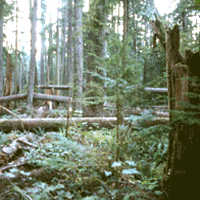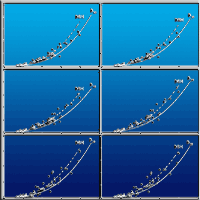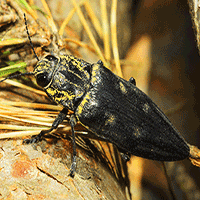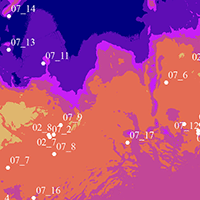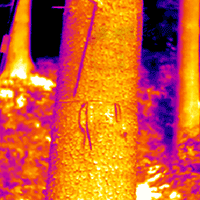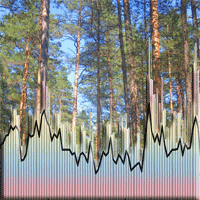
Effective monitoring as a basis for adaptive management: a case history of mountain pine beetle in Greater Yellowstone Ecosystem whitebark pine
JA Logan (1) , WW Macfarlane (2), L Willcox (3)
iForest - Biogeosciences and Forestry, Volume 2, Issue 1, Pages 19-22 (2009)
doi: https://doi.org/10.3832/ifor0477-002
Published: Jan 21, 2009 - Copyright © 2009 SISEF
Short Communications
Collection/Special Issue: Cost Action E29 Meeting 2008 - Istanbul (Turkey)
Future Monitoring and Research Needs for Forest Ecosystems
Guest Editors: Marcus Schaub (WSL, Birmensdorf, CH)
Abstract
With reference to massive outbreaks of a variety of bark beetles occurring across the forests of western North America, it is stressed that an accurate assessment of the extent of the problem is the first step toward formulating effective adaptive management strategies. This assessment will only be possible through a coordinated effort that combines all available technologies, that is an approach that builds on satellite image analysis, aerial survey from fixed-wing aircraft, and on the ground observation and measurement.
Keywords
Mountain pine beetle, Whitebark pine, Greater Yellowstone Ecosystem, Global warming, Disturbance ecology
Authors’ Info
Authors’ address
P.O. Box 482, Emigrant, MT 59027 (USA)
GeoGraphics Inc., 90 W Center St., Logan, UT 84321 (USA)
Natural Resources Defense Council, Box 70, Livingston, MT 59047 (USA)
Corresponding author
Paper Info
Citation
Logan JA, Macfarlane WW, Willcox L (2009). Effective monitoring as a basis for adaptive management: a case history of mountain pine beetle in Greater Yellowstone Ecosystem whitebark pine. iForest 2: 19-22. - doi: 10.3832/ifor0477-002
Academic Editor
Marcus Schaub
Paper history
Received: Mar 13, 2008
Accepted: Dec 09, 2008
First online: Jan 21, 2009
Publication Date: Jan 21, 2009
Publication Time: 1.43 months
Copyright Information
© SISEF - The Italian Society of Silviculture and Forest Ecology 2009
Open Access
This article is distributed under the terms of the Creative Commons Attribution-Non Commercial 4.0 International (https://creativecommons.org/licenses/by-nc/4.0/), which permits unrestricted use, distribution, and reproduction in any medium, provided you give appropriate credit to the original author(s) and the source, provide a link to the Creative Commons license, and indicate if changes were made.
Web Metrics
Breakdown by View Type
Article Usage
Total Article Views: 60626
(from publication date up to now)
Breakdown by View Type
HTML Page Views: 51380
Abstract Page Views: 3715
PDF Downloads: 4485
Citation/Reference Downloads: 82
XML Downloads: 964
Web Metrics
Days since publication: 6193
Overall contacts: 60626
Avg. contacts per week: 68.53
Citation Metrics
Article Citations
Article citations are based on data periodically collected from the Clarivate Web of Science web site
(last update: Mar 2025)
Total number of cites (since 2009): 15
Average cites per year: 0.88
Publication Metrics
by Dimensions ©
Articles citing this article
List of the papers citing this article based on CrossRef Cited-by.
References
Grizzly bear-human conflicts, confrontations, and management actions in the Yellowstone ecosystem, 1996. Interagency Grizzly Bear Committee, Yellowstone Ecosystem Subcommittee report. U.S. Department of the Interior, National Park Service, pp. 43. [unpublished report]
Gscholar
Ecological consequences of climate change: altered insect disturbance regimes. In: “Climate change in western north america: evidence and environmental effects” (Wagner FH ed). University of Utah Press, Utah, USA. [in press]
Gscholar
Causes and consequences of dietary differences among Yellowstone grizzly bears (Ursus arctos). Ph. D. Dissertation, University of Idaho, Moscow, USA.
Gscholar

